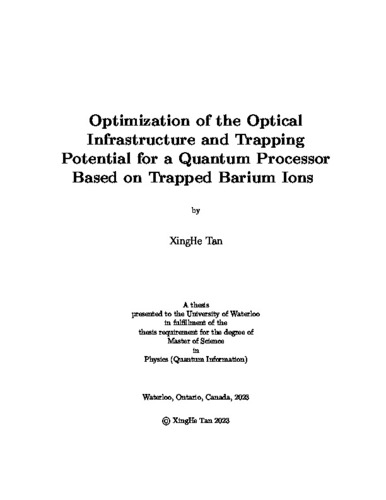| dc.description.abstract | Trapped ion quantum computers represent a cutting-edge quantum computing platform,
keeping the highest reported state preparation and measurement fidelity of 99.97%.
Recently, barium ion has emerged as the research interest of several teams due to its exceptional
characteristics, including visible and inferred state transition frequencies, long-lived
metastable states, and a simple hyperfine structure. Our research group aims to demonstrate
trapping 16 133Ba+ ions on a micro-fabricated surface trap and build a quantum
computing platform. In the long run, we intend to open access to this platform for the
academic community to use. This project is named the QuantumIon project.
The project started in 2019, just before the global pandemic. During the pandemic,
the QuantumION team did not have the lab space and the components to prototype and
benchmark subsystems in parallel with system design. Instead, the team designed the
entire system on computers during the pandemic. I joined the QuantumION team in
2022 and performed the system assembly, validation and optimization when the pandemic
restrictions were lifted. In this thesis, I describe the optimization of the optical system
for delivering laser beams to the ions and the validation of a 0.6 NA imaging system
that will be used to observe the ion fluorescence as a means of measuring its quantum
state. While benchmarking the optical systems, I found that the performance of the
components deviated from their ideal specifications, such as insertion loss. Therefore, I
had to modify the system design to ensure the optical systems functioned in practice. In
addition, I conducted a feasibility study on delivering an ablation laser via multimode fiber
and simulated a trapping potential on the surface trap that achieved approximately even
spacing for 12 out of the 16 trapped ions. | en |

